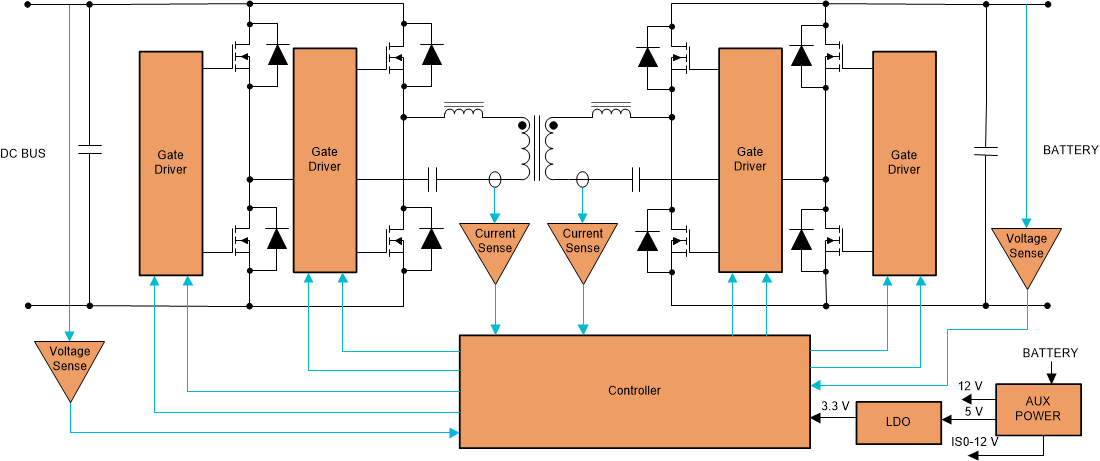SLLA498 October 2020
4.4 CLLLC Converter
The CLLLC converter shown in Figure 4-4 incorporates all the functionalities of the LLC described before, but a major advantage of this topology is that with the use of active switches across the secondary, we can obtain bidirectional power transfer. The ZVS/ZCS operation of this converter over a large load range results in increased efficiency.

Figure 4-4 CLLLC Converter
This converter can be used at higher power levels up to 10 kW. But scaling to higher power levels and paralleling can be difficult, as it requires a highly symmetrical tank structure and synchronization of multiple modules can be quite difficult. Also this converter, with capacitors in the primary and secondary side of the transformer, naturally prevents saturation over time of the core of the transformer. Similar to the LLC converter, this topology also gives superior EMI performance due to its soft switching characteristics.
The TI reference design Bidirectional CLLLC resonant dual active bridge (DAB) reference design for HEV/EV onboard charger contains details on the implementation of this converter. This topology being a bidirectional DC/DC topology is an option to consider for the bidirectional DC/DC stage (see Figure 3-1) between the Battery Management System and HV DC Bus.